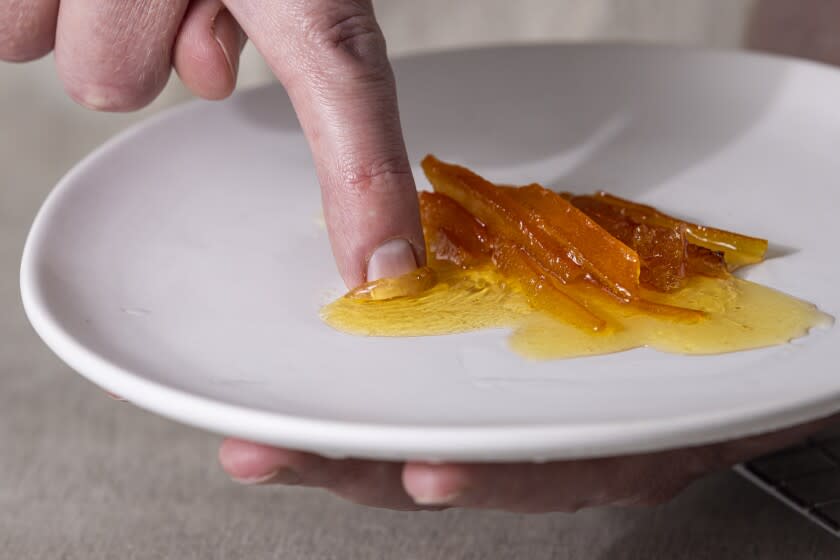What is the 'plate test' and why it's important in making marmalade

This story is a component of the feature “Seasons of Preserves: Citrus Marmalade,” which is part of a four-part series on preserving fruit at home called “L.A. in a Jar.”
A stalwart of making jam is the “plate test,” in which you spoon some hot jam onto a frozen plate so the jam cools quickly and you can test its texture as if it was already “set” at room temperature. It’s not so necessary to perform this test when making jam or fruit butter since there are less fickle ways to test their doneness, but marmalades and jellies require it.
You simply spoon a little of the peel and cooking liquid onto a frozen plate, then return it to the freezer for 2 minutes. Take the plate out and push your finger through the liquid part. If it “wrinkles” and looks like, well, set jelly, you know the marmalade is ready. Out of all the temperature readings or eye-sight cues out there for judging the doneness of marmalade, I’ve found the plate test to be the only truly effective one.
This story originally appeared in Los Angeles Times.

